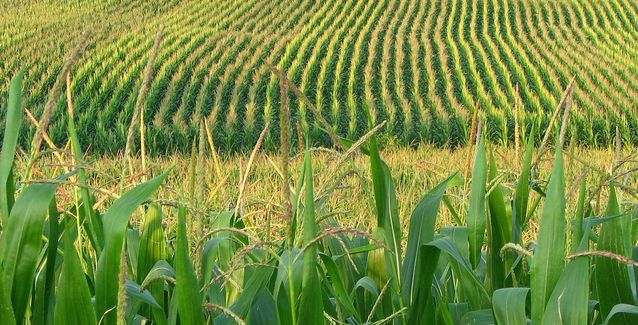Corn harvest acres and bushels per acre up in 2023
by January 18, 2024 3:03 pm 1,405 views

The third most widely grown row crop in the Arkansas Delta had a rebound year in 2023 in terms of bushels and acres harvested. Producers harvested 149 million bushels of corn from about 830,000 acres, an average yield of 180 bushels per acre, according to the U.S. Department of Agriculture.
Compared to 2022, it was about seven more bushels per acre on 135,000 more acres of corn planted. Last year, farmers only harvested about 700,000 acres. The yield maintains the state’s 10-year average of 180 bushels per acre.
The yield numbers were especially promising after high winds in parts of the Delta “greensnapped” some farmers’ corn stalks before the harvest.
Corn wasn’t the only crop that had a rebound year in Arkansas. Winter wheat acreage planted in the fall of 2022 was also up 4.5% to 230,000 acres with a state average of 57 bushels per acre, a 7.5% increase from 2022.
“Overall, it was a good year for corn and other crops,” said Jason Kelley, professor and wheat and feed grains extension agronomist with the University of Arkansas System Division of Agriculture. “The significant increase in corn acres for Arkansas is twofold — good grain prices that farmers were able to lock in prior to planting, and a conducive April to get the crop planted timely.”
A dry April and May helped get the corn crop off to a good start, Kelley noted, and timely rains in June and July reduced irrigation demands. Relatively mild temperatures during “grain fill,” an important time of corn development, also helped improve yields, he said.
Favorable weather for most of the state between August and October allowed corn farmers to get their crops harvested quicker than average. The downside to the dry weather was that Mississippi River levels reached historic low levels over the summer and throughout the fall during harvest.
“Barge traffic on the river was disrupted and barges could not travel or could only be partially loaded to get down the river, resulting in grain price dropping locally,” Kelley explained.
However, most of the corn harvest was nearing completion before the river reached historic low levels, he added.
With relatively dry weather, however, foliar disease like southern rust was less impactful on corn leaves. And although Southwest corn borers remained a concern for “non-Bt corn” growers, impacts were relatively low in both 2022 and 2023, Kelley noted. “Bt” stands for Bacillus thuringiensis, a soil bacterium that produces proteins to protect the corn plant against certain insect pests.
The USDA showed a 4.5% increase in fall 2022 for winter wheat, with 230,000 acres planted. The harvest in spring 2023 of the crop planted the prior fall produced a state average of 57 bushels per acre.
“Grain quality was excellent this year due to dry conditions at harvest,” Kelley said of the most recent Arkansas winter wheat crop.
More than 99% of the wheat grown in Arkansas is soft red winter wheat, which has a lower gluten content and is typically used in foods such as crackers, cakes and pastries, Kelley explained. Hard red winter wheat, or hard red spring wheat, is typically grown in the Great Plains states and has a higher gluten content, which is primarily used for making bread.
Most of Arkansas’ winter wheat is grown in the Delta and exported via the Mississippi River, since Arkansas does not have a commercial flour mill, Kelley said. Some years, however, Arkansas winter wheat is used for the in-state livestock or poultry feed markets. But it depends on the price of wheat compared to traditional feed sources such as corn or grain sorghum.
According to the USDA Farm Service Agency, certified acres of grain sorghum in Arkansas in 2023 was 12,000 acres, which was similar to 2022. The state’s grain sorghum acreage has been low the past five years due to lower profit potential compared to other crops, especially on irrigated fields, as well as lack of grain terminals accepting it, Kelley said. Although some poultry companies use grain sorghum as a feed source, most of it is exported.
In terms of cash receipts, corn is one of Arkansas’ most valuable crops. The crop has an annual value of about $516 million, according to the Arkansas Agriculture Profile.
